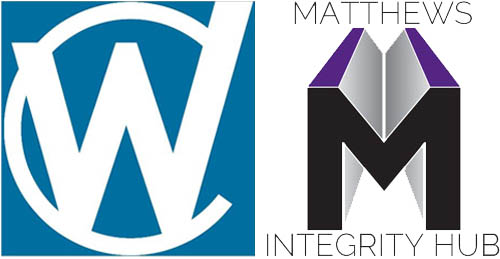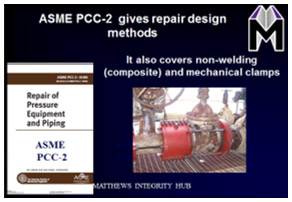WELCOME to our TECHNICAL QUIZZES
Each of our technical quizzes is compiled to give you an insight into the technical coverage of codes and standards included in various certification exams in the integrity industry. We’ve also included areas of specific technical interest on other integrity topics.
There are only 5 questions per quiz. Have a go at them first then check the answers and see how you’ve done. There’s a ‘5-minute coaching section’ at the end of each quiz set to guide you on the relevant technical subject.
PRESSURE EQUIPMENT REPAIRS QUIZ
Repairs to Pressure Equipment
In the real world of plant operation, pressure equipment items commonly suffer corrosion, erosion, or mechanical damage and have to be repaired. Welded repairs are the most common. For equipment built to a pressure equipment code (ASME, EN etc.) the objective is to carry out repair welding to the original code requirements. In many cases this will not be possible so post-construction codes (PCCs) are used. The main ones are the API 510/570/653 codes and the ASME PCC-2 code. These work on similar engineering principles but have individual differences.
Try these five quiz questions about the requirements of PCCs for welded repairs.
Q1. Fillet-welded patches
According to API codes, which of these items are allowed to have fillet-welded ‘lap’ patches added as a permanent repair for wall-thinning corrosion?
a) Pipework
b) Unfired pressure vessels
c) Atmospheric oil storage tanks
d) None of the above
Qu 2: Scope of Post Construction Codes (PCCs)
When doing site weld repairs to pressure envelope components using PCCs, one criterion of the construction code which is commonly overridden is:
a) PWHT requirements
b) Welding consumable P-No
c) Welder qualifications
d) WPS essential variables
Qu3. Pipework welded repairs
Which of these is only allowed as a temporary repair on process pipework?
a) Flush ‘insert’ patches
b) Grinding out a through-wall defect and rewelding
c) Full encirclement welded split sleeve
d) Weld overlay
Qu4. Fillet welded patch restrictions
Which of these features is prohibited on fillet-welded patches to API 570?
a) A patch on material of 20,000psi tensile strength
b) 3in long patch on a 12in line
c) A patch on material of 35,000psi tensile strength
d) 8in long patch on a 12in line/p>
Qu 5: Weld overlay repair on flange faces
When can weld overlay be used to build up a heavily corroded area on a flange face?
a) Never; it is not allowed by construction code or PCC
b) If the flange is not yet corroded to minimum code thickness
c) If Carbon Equivalent is less than 0.3%
d) In all cases, as long as the materials are compatible
Once you have had a try at the questions, have a review of The Answers
If you didn’t get them all correct, have a look through our 5-minute coaching points below
5-MINUTE COACHING
Welded repairs to pressure equipment
ASME and API PCCs are comprehensive documents covering a very practical subject. Once you gain familiarity with them they will enable you actually specify and design repairs, as well as just inspecting repairs done by others. The issue of which repairs can be classed as temporary or permanent depends on which code is used, and the type of component.
See our short slide presentation covering this topic







